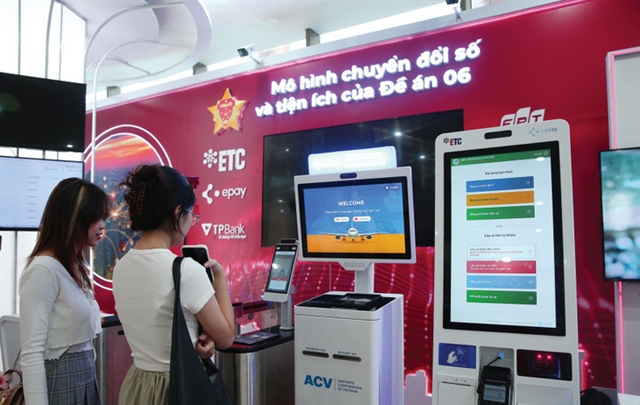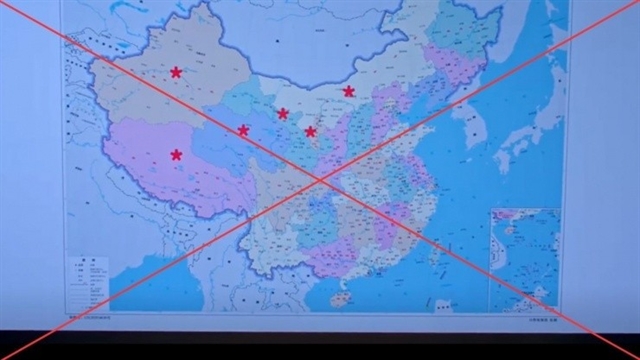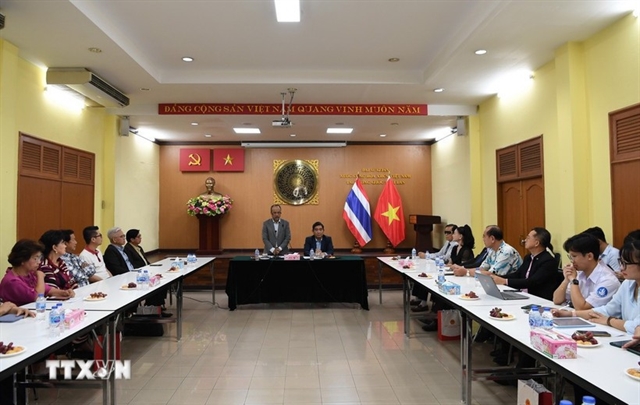 Business Beat
Business Beat

 |
| Firms in HCM City were receiving the disbursemetn of loans after the credit growth target was lifted for 2022. — VNA/VNS Photo |
Compiled by Mai Linh & Bồ Xuân Hiệp
HÀ NỘI — Enterprises in HCM City were receiving the disbursement of loans after the State Bank of Việt Nam (SBV)’s move to lift the credit growth target by 1.5-2 percentage points for 2022 from its earlier target of 14 per cent, allowing banks to lend an additional VNĐ240 trillion (US$9.7 billion).
Trương Tiến Dũng, deputy chairman of the Food and Foodstuff Association of HCM City, said that many member companies of FFA received the disbursement of loans after the central bank lifted the credit growth target.
Especially, enterprises which participated in the city’s price stabilisation programme were able to access loans with preferential rates, around 1-2 per cent lower than the average. This helped them have more working capital for production and business during the peak season.
Nguyễn Đình Tùng, general director of Vina T&T which also received the disbursement of loans recently, said that although the loan met only 15 per cent of demand, it helped a lot in improving liquidity and paying bonuses for the upcoming Tết (Lunar New Year) holiday.
Nguyễn Đức Lệnh, deputy director of the State Bank of Việt Nam's HCM City branch, said that after the central bank’s decision to expand credit room, many enterprises in the city were able to access loans, especially those operating in prioritised sectors.
He cited statistics that credit in the southern city in December alone rose by 1.4 per cent, equivalent to VNĐ45 trillion.
The total outstanding loans in the southern city totalled VNĐ3.23 quadrillon in 2022, up by 14 per cent over 2021.
Credit growth in HCM City was in line with the central bank’s management orientation in 2022, he said, adding that the credit flow which focused on production and business and supporting for economic recovery accounted for 60-70 per cent of the total outstanding loans.
According to Phạm Thị Thanh Xuân, deputy director of the Institute for Development and Research in Banking Technology, the recent race to raise deposit interest rates between commercial banks had been long enough for banks to reestablish market share and it’s now time to cool down the competition.
However, the interest rates are still at high levels, despite the central bank's calling on credit institutions to cut lending rates to support businesses, and for several enterprises, getting loans disbursed remained a burden for them.
Deposit interest rates at banks have surged to as much as 12 per cent per year, which pushed lending interest rates up to 15-16 per cent a year.
“Accessing loans is notoriously challenging,” said Phạm Quang Anh, director of Dony Garment Company.
“Many companies, especially SMEs, need funds to tackle cashflow issues or to develop growth strategies.
“I’ve been rejected by banks although my company has collateral and a good credit score,” he said.
Other companies also said they were facing difficulties in acquiring new loans, with banks only agreeing to lend the amount that they have repaid on current loans.
Companies with week finance contingency plans or without collateral would find it even more difficult to get loans. Many companies have delayed their plans to expand and upgrade their technology because of the cash shortage.
A general director of a commercial bank, who did not want to be identified, said not every bank is able to reduce lending rates as it depends on each bank’s financial capacity.
Only businesses in priority sectors, such as consumption, investment, exports, industrial property development, and social and workers’ housing development, would be considered, he said.
Dr. Nguyễn Quốc Hùng, general secretary of the Vietnam Banks Association (VNBA), said banks would only reduce lending rates for reputable enterprises with a good credit rating.
To reduce lending interest rates, of course, deposit rates must decrease, he added.
The Vietnam Banks Association earlier called on local lenders to keep deposit interest rates at 9.5 per cent or below to reduce lending interest rates and boost economic recovery.
Dr. Đinh Trọng Thịnh, a banking expert, said even when deposit interest rates decrease, it would take some time for the lending interest rates to decrease.
The level of reduction will depend on the “financial health” of each bank, he added.
Instead of calling on commercial banks to lower lending rates, the central bank should lower the operating interest rate first, he recommended.
For property projects, banks would not lend to projects which have not yet completed legal procedures, or projects in the high-end segment, which have high selling prices and low liquidity, according to Thịnh.
Instead, banks would consider affordable housing projects with high liquidity, he said.
“Also banks would not lend to businesses to repay investors who bought their bonds issued,” he noted.
Expert Cấn Văn Lực recommended enterprises be open to other funding channels instead of relying too much on bank loans.
SBV Governor Nguyễn Thị Hồng recently called on banks to reduce their operation costs to create room for lower lending interest rates.
In the context that the economy was predicted to face many difficulties and challenges in 2023, the banking credit flow played a very important role in the recovery of the business community.
Lệnh from SBV's HCM City branch said that the central bank would continue to maintain a reasonable credit growth target in line with macro-economic development, contributing to controlling inflation, and supporting economic recovery and growth. The credit flow would be directed to prioritised sectors while credit quality would also be improved. — VNS




